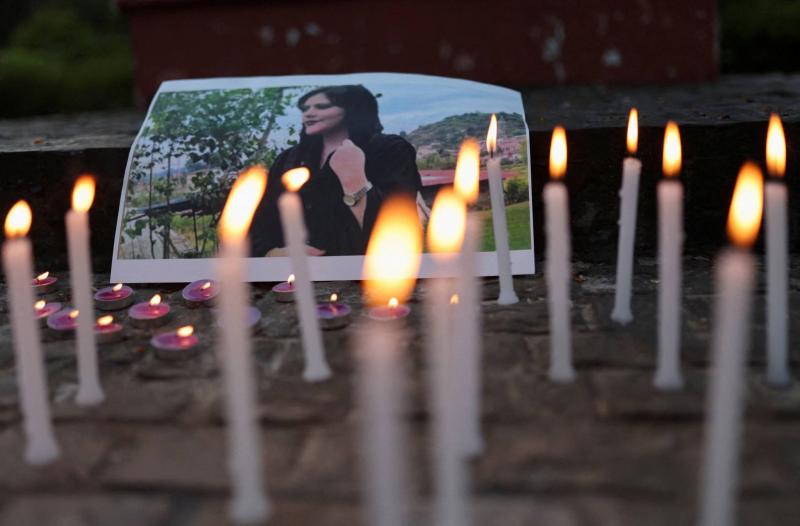Iranian authorities have intensified their crackdown on opposition one year after Mahsa Amini died while in police custody, which sparked protests that evolved into one of the worst political upheavals since the 1979 Islamic Revolution.
**How Did the Protests Begin?**
The protests began following the death of 22-year-old Kurdish Iranian Mahsa Amini on September 16, after being held for three days by the morality police on accusations of violating Iran's mandatory Islamic dress code. Amini was detained after leaving a train station in Tehran; she was described as a "shy personality who cared for her own affairs and had no interest in politics." News of her death spread across social media, leading to protests during her funeral in her hometown of Saqqez, which then expanded nationwide, with demonstrators chanting "Woman, Life, Freedom" in fierce defiance of Iran's religious rulers. While Amini's family stated that she was "killed by blows to her head and limbs," authorities claimed that she "died due to medical issues," further fueling anger over her death.
**What Do the Protesters Want?**
Women and youth often led the demonstrations, targeting symbols of the Islamic Republic. Protesters burned images of Supreme Leader Ayatollah Ali Khamenei and chanted "death to the dictator." Women, including schoolgirls, removed and burned their hijabs in rebellion against laws that require women to cover their hair and wear loose clothing. Protests were especially intense in areas inhabited by ethnic minorities that have long faced discrimination from the authorities, including Kurds in the northwest and Baloch in the southeast. Meanwhile, more women began to ignore dress codes. After a chess player and a climber competed without wearing a hijab, other prominent women challenged authorities by violating hijab laws and expressing support for the protests. Authorities imposed travel bans and issued prison sentences for several public figures, ranging from athletes to actresses.
**Crackdown on Protests**
Security forces restricted access to messaging apps and fiercely confronted unled protesters, employing tear gas, batons, and in some cases live ammunition, even as protests continued into the new year. The paramilitary Basij force played a prominent role in the crackdown. Human rights organizations reported that "more than 500 people, including 71 minors, were killed, hundreds were injured, and thousands were arrested." Iran executed seven individuals linked to the unrest. The authorities did not provide an official death toll but mentioned that dozens of security personnel were killed in "riots."
**Has Anything Changed?**
The ruling elite, supported by the Revolutionary Guards, appears firmly entrenched despite initial difficulties in suppressing protests. The morality police largely disappeared from the streets following Amini's death. However, as protests subsided, the morality police returned with surveillance cameras to monitor and punish women not wearing hijabs. Authorities labeled the hijab as "one of the principles of the Islamic Republic," ordering both public and private sectors to deny services to any woman who discarded it, resulting in the temporary closure of thousands of businesses that did not comply. However, many Iranians claim that "the number of unveiled women continues to grow," while the parliament is looking to enforce longer prison sentences for violators of dress codes, imposing stricter penalties on celebrities and companies that violate these rules. Internationally, Western countries imposed new sanctions on security forces and dozens of Iranian officials in connection with the protests, exacerbating already tense relations.
**How Have Iranian Officials Improved Their Position?**
Recent measures taken by security forces indicate that Iranian authorities do not intend to tolerate any opposition as the anniversary of Amini's death approaches. Activists accused authorities of launching a campaign of intimidation, spreading fear, arresting, interrogating, and threatening or expelling those linked to the protests. In recent weeks, journalists, lawyers, activists, students, academics, artists, public figures, and relatives of deceased protesters, particularly from ethnic minorities, have been targeted. Iranian officials have blamed foreign adversaries, particularly the United States and Israel, for the unrest, increasing the risks for anyone who faces arrest. However, authorities risk widening the rift between the religious government and ordinary Iranian citizens, who are increasingly anxious due to the economy, which has been severely affected by sanctions and mismanagement, posing a potential source of unrest in the future.




